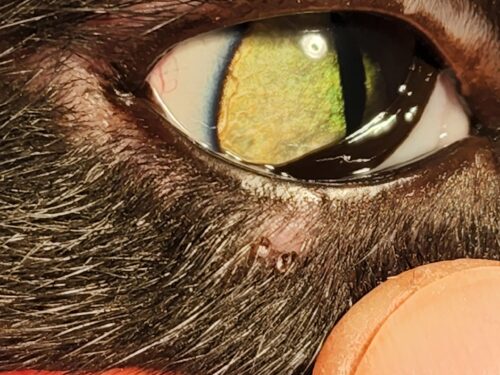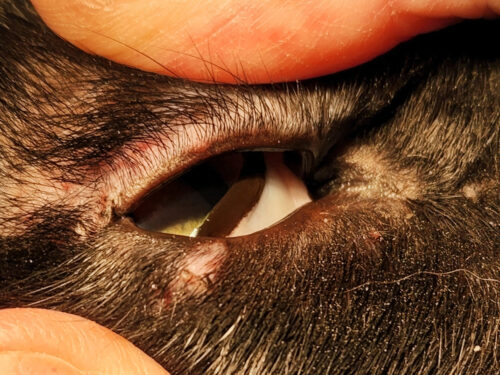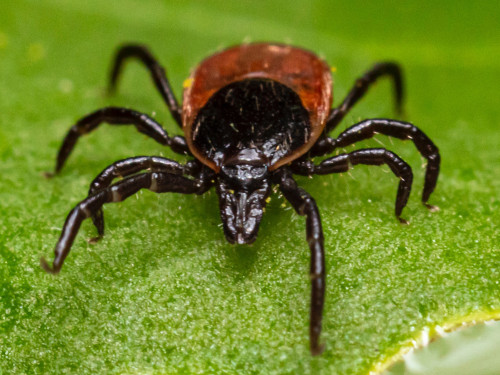Dr. Neumeister recommends that cat owners routinely brush their cat’s coats and search for signs of ticks or fleas. Cats are usually meticulous groomers, therefor it is rare to see more than one or two ticks on a cat. If you do find an attached tick you can remove it with forceps or tweezers, by reaching below the tick’s body and grabbing it close to the head where the tick is attached to the skin and pulling it out.
Make sure to wear gloves and avoid touching the tick with bare skin, as they can transmit diseases to humans.
Some tick species are very small: the 2 photos underneath show Deer ticks (black-legged ticks) that are attached underneath one of our patient’s eyes.
 |
 |
Although there are at least 15 species of ticks in North America, only a few of these species are likely to be encountered by your cat. They include the American dog tick, lone star tick, deer or black-legged tick, and brown dog tick.
Deer ticks or black-legged ticks have three active stages: larvae, nymphs, and adults. They feed on different animals, including cats. The tiny larvae mostly feed on small animals like white-footed mice in the spring. After a year, the larvae turn into nymphs that are about the size of a pinhead and will feed on mice, bigger animals, and people. In the fall, they become adults that mostly feed on deer and lay up to 2,000 eggs in the spring.
 Adult deer ticks have a reddish-brown color and a dark brown or black shield-like shape between their mouth and body. They are usually found in wooded areas along trails, and they are distributed throughout the Midwest and eastern United States and Canada. The larvae and nymphs are active in the spring and early summer, while adults may be active in both the spring and fall.
Adult deer ticks have a reddish-brown color and a dark brown or black shield-like shape between their mouth and body. They are usually found in wooded areas along trails, and they are distributed throughout the Midwest and eastern United States and Canada. The larvae and nymphs are active in the spring and early summer, while adults may be active in both the spring and fall.
Deer ticks can spread diseases like Lyme disease, ehrlichiosis, and anaplasmosis to cats, dogs, and humans. However, it is very unlikely for cats to get Lyme disease, and it has not been seen outside of a controlled laboratory setting since 2018. To keep your cat safe, it is best to keep them indoors and use flea and tick control measures.
